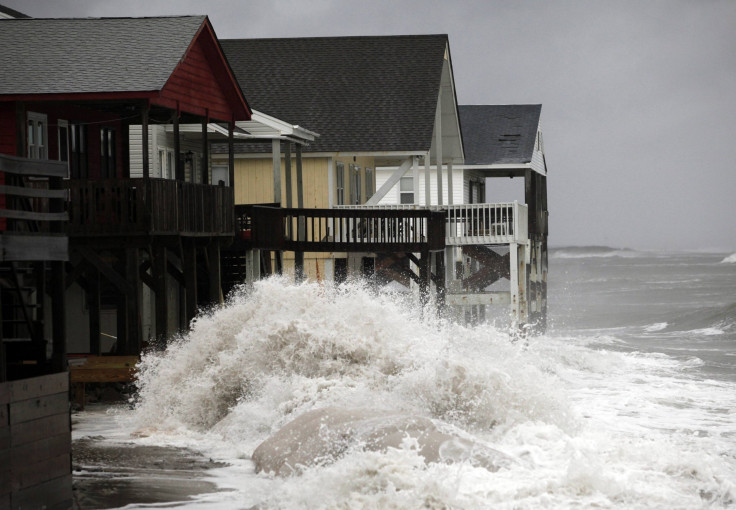Hurricane Sandy Could Cost US Billions In Damages

With Hurricane Sandy believed to be a couple of days away from making landfall on the U.S. East Coast, some forecasters think damage from the so-called Frankenstorm could cost the country billions of dollars in repair and other costs.
Hurricane Sandy is expected to combine with two other severe weather systems to create the Frankenstorm, which could rival the strongest East Coast storms on record. The Frankenstorm is expected to make landfall in the mid-Atlantic region -- maybe New Jersey, perhaps the Delmarva Peninsula -- on either Monday night or Tuesday morning.
While Sandy is currently only a Category 1 hurricane, specialists at the Weather Channel say that as it morphs into the Frankenstorm, its effects will be felt over an extraordinarily wide area.
"Do not focus on the intensity of the storm, it is a minimal Category 1 hurricane right now, but certainly nothing like any Category 1 that we have seen," said Carl Parker, hurricane specialist at the Weather Channel. "It is a very large storm, a hybrid storm, the area of strong winds is going to be absolutely enormous by the time it comes into the Northeast -- and that’s why it is going to be a high-impact system."
Hurricane Sandy is expected to be stronger -- and, more important, wider -- than last year’s Tropical Storm Irene, which made landfall in New Jersey and caused more than $15 billion in damage. The tab could be considerably higher for Hurricane Sandy.
“This is really going to be a huge storm and something unprecedented in meteorological terms,” AccuWeather forecaster Marshall Moss told the New York Daily News. “This storm will affect millions and cost billions.”
In New York state, Gov. Andrew M. Cuomo on Saturday told the Metropolitan Transportation Authority, or MTA, to begin planning for an orderly suspension of all subway, bus, and commuter-railroad service because of the approach of Hurricane Sandy. In a worst-case scenario, New York's subway tunnels could be flooded with several feet of water.
According to the MTA: "If a decision to suspend service is made by Sunday, New York City subways and buses would begin an orderly suspension of service at 7 p.m. Sunday. Metro-North Railroad and the Long Island Rail Road would suspend service at 7 p.m. Sunday. Some lines may be curtailed over a period of several hours before all service is suspended, but no one would be able to rely on any MTA service after 7 p.m. Sunday."
Meanwhile, power outages are also possible throughout the city.
Last year, Tropical Storm Irene cost the MTA alone about $65 million, according to WABC-TV in New York.
© Copyright IBTimes 2024. All rights reserved.












